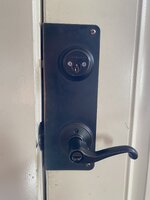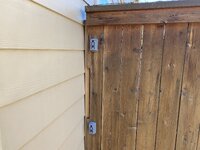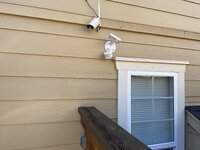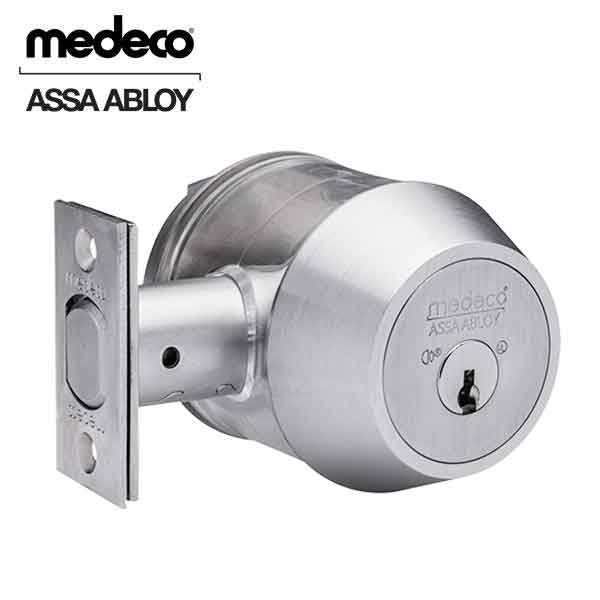Gold Supporter
Bronze Supporter
- Messages
- 12,922
- Reactions
- 47,167
Follow along with the video below to see how to install our site as a web app on your home screen.
Note: This feature may not be available in some browsers.
Used to live next to a marshy preserve that has blackberry bushes/vines growing up against the trail inlet. Someone had previously cut a path but the bushes must have been 6' tall, grew very tight together and thick, and bordered the first 30' or so of the trail.I really hate plants with spikes in my yard but I do have well-established old roses with those big hard thorns in front of the easier windows to get in. A breed of dog that gives people a second thought. A couple of cheap harbor freight motion detectors in key places that ding a bell in my house to let me know if something more than 3 feet tall is walking around outside.
Not a bad idea. I'll be doing this next summer when I rebuild my fence. Thanks!If you have a wooden fence on your property, consider removing the slats, then putting up chicken or hog wire, then replace the slats. This makes your fence much stronger. It's really fairly easy to break through redwood slats, especially if they are old.
Also, while the slats are off, inspect and replace any structural parts that are rotting and it's a great time for repainting.
I installed 3M's Ultra S600 security film on my rear glass slider and attached it to the frame with Dow 995, both Commercial Grade products.The 3M is basically a vinyl film (a lot like window tint) that create a serious barrier to someone trying to smash the window in. It's very difficult to do and takes a lot of time.
I converted my standard Schlage deadbolts to operate in this manner to prevent someone from breaking the side-lite or door windows, and reaching in to unlock the door. I take the interior key out at night, and whenever I leave the house.I like a double deadbolt high security lock on my doors-- you need a key to get into or out of the house

I've gone back and forth on this one, although I've only secured it with cable ties, never actually removed it. My concern is that the door or operator will fail, and my wife won't be able to get out of the garage if needed.-Removing the "emergency" pull down lever for garage doors.




I don't have vehicles in the garage so luckily that's not an issue for me or my wife. But I totally understand where you're coming from. Good on you for at least tying them up making it much more difficult to hook and release.I installed 3M's Ultra S600 security film on my rear glass slider and attached it to the frame with Dow 995, both Commercial Grade products.
I converted my standard Schlage deadbolts to operate in this manner to prevent someone from breaking the side-lite or door windows, and reaching in to unlock the door. I take the interior key out at night, and whenever I leave the house.
I also attached both strike plates with 3" screws and installed a door reinforcing plate at all exterior doors
View attachment 1372173
I've gone back and forth on this one, although I've only secured it with cable ties, never actually removed it. My concern is that the door or operator will fail, and my wife won't be able to get out of the garage if needed.
I put these GE Glass Vibration Alarms on my front windows
View attachment 1372168
I double latched my gates and secured the pull cords with combination key lock boxes, and gave NW Natural the combo so they can read the gas meter.
View attachment 1372169
View attachment 1372170
And I installed cameras, lights, and topped each gate with barbed wire on both sides of my house. The light/camera combination works well for the cheap 2MP cameras since their nighttime IR performance is marginal at best.
View attachment 1372171
And in the event of a fire???I like a double deadbolt high security lock on my doors-- you need a key to get into or out of the house

Medeco - 11TC624 - Maxum Commercial - M3 Biaxial - 6-Pin - Double Deadbolt - Optional Backset - DL Keyway Pinned - 26 - Satin Chrome - Grade 1
Specifications: - 26 Finish (Satin Chrome) - 2-3/8" Backset - 2x 6-Pin M3 Cylinder w/2 Keys & CardThe Medeco Maxum deadbolt exceeds Grade 1 ANSI/BHMA A156.36 standard for auxilary locks. Solid brass, free turning collar and 1/4 inch diameter mounting bolts resist wrenching, prying and hammering...www.uhs-hardware.com
These locks weigh as much as my Desert Eagle
I leave my keys in the lock when I'm homeAnd in the event of a fire???
In the room that the front door enters, there are 4 windows, a glass slider, and the door to the garage. I think I'm covered with other options...And in the event of a fire???
Start with food that does not give away the fact that you have food. No smells. Also, if everybody around you is going without then you should not loook like you are not losing weight like ev everybody else. Food can/will get you killed. Maybe baggy clothes to give the appearance of unwanted weight loss?I am interested in ideas that apartment dwellers could take advantage of if things go south. We live in a condo complex that used to be apartments. We can only make changes from the studs in without approval from HOA.
That is a good point about weight and especially important if you remain visible to neighbors. Probably another reason to hunker down inside your home 24/7.Start with food that does not give away the fact that you have food. No smells. Also, if everybody around you is going without then you should not loook like you are not losing weight like ev everybody else. Food can/will get you killed. Maybe baggy clothes to give the appearance of unwanted weight loss?
Any changes you make that the HOA can't see without removing sheetrock could have been made by prior tenants/owners. I would definitely reinforce the door screws and even look at some way to to accommodate a draw bar. In addition have something to prevent entry via windows. That's OK even in today's situation - would they allow window bars? If not, have sonme concertina to line the window frames when it all breaks loose.
Look lu "ferfal" and "selco" and read about how they survived urban collapse. Probably shoulf=d be your first move.
I was just talking with my wife and told her I would be on board for camera system that didn't require internet or grid power to function. She says she did a ton of research and they don't exist. I am thinking that we put a man on the moon and we can't make cameras that work without internet or grid power??? Maybe a Bluetooth camera with battery backup would work? Maybe cell phones could be rigged up as cameras and send video via Bluetooth to another phone. Maybe web cams could be teamed up with cell phones?Simply safe doesn't require Internet, and has a battery backup in the base station.
For monitoring by their central station it does require cell connection (can get ATT or Verizon versions IIRC), or just normal internet connection. With cell backup for internet outage.
Cameras with SimpliSafe need internet.
Still works as a standalone system without internet or cell connection. Again, cameras won't work without internet.
Can hookup base station to UPS for extended power if an extended outage. Doing such will not alert you of a power outage in normalcy though, as the base won't flip over to its internal battery until the UPS is drained.
In short, decent system for normalcy. Cameras kinda suck (because of internet- can't simply have on a monitor/tv), but worthwhile if there's a deal/coupon/package etc.
Would be allrite in non-normalcy I suppose too, for entry/window sensors & such.
Have yet to hook up there version of ring type doorbell (for normalcy), so can't say yet firsthand if worthwhile. Or not. Reviews say to just go with ring for that though. Chose not to.